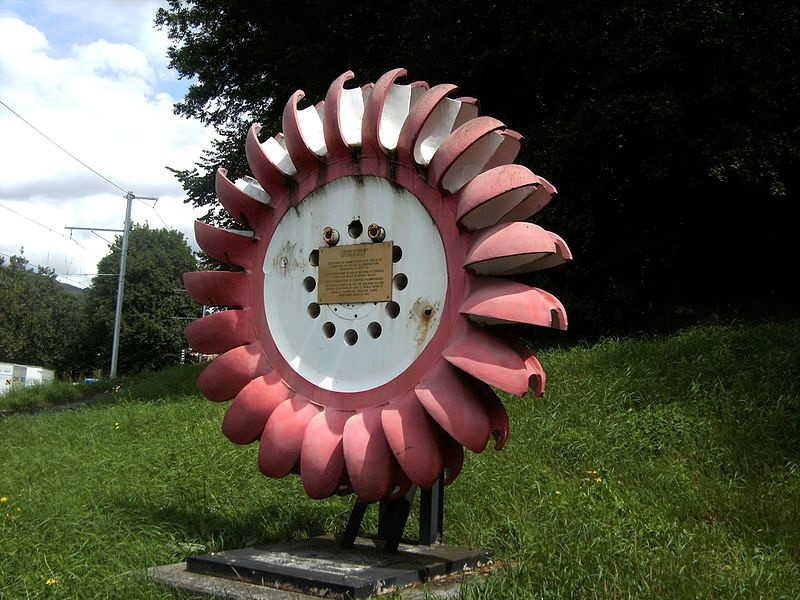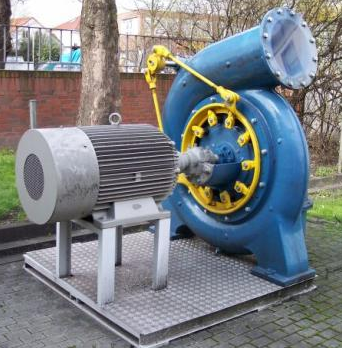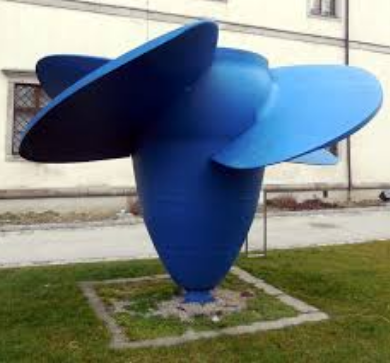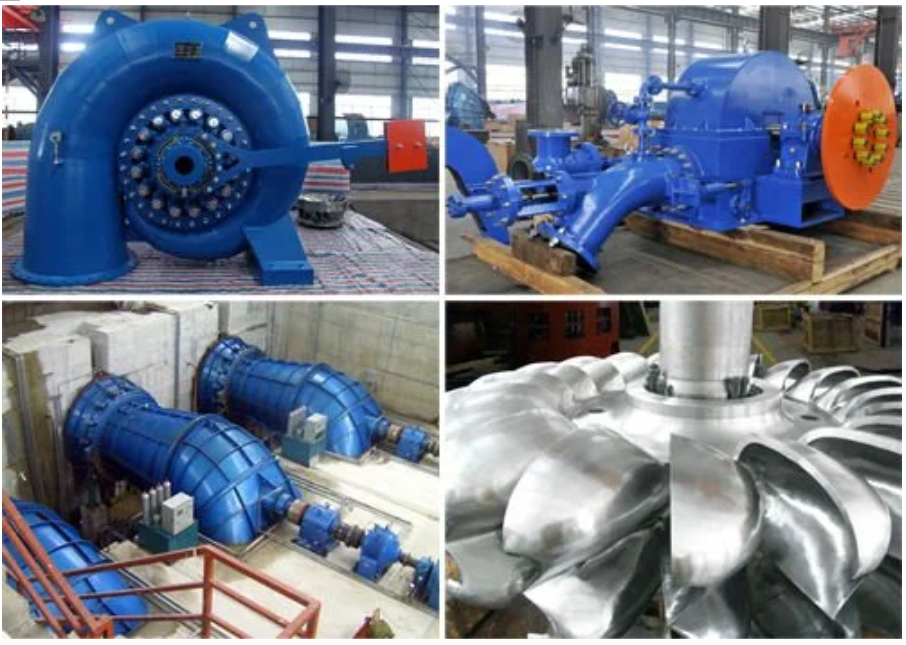Here we will talk about the differences between Pelton, Francis, and Kaplan Turbines. To understand these concepts better, let’s take a look at some fundamental concepts first.
In general, the differences between Pelton, Francis, and Kaplan Turbines refer to the distinctions between impulse and response turbines. Turbines such as Pelton, Francis, and Kaplan are major byproducts of using industrial machinery. Pelton, Francis, and Kaplan Turbines are available from a variety of Suppliers and Companies, as well as several manufacturers and distributors, with many Turbines for sale on Linquip.
A full list of Pelton, Francis, and Kaplan Turbines services is available on the Linquip website, which covers all OEM fleets. Linquip vendors can assist you with this. To discover more about how to connect with a wide selection of Service Providers who continuously supply the highest quality items, please contact Pelton, Francis, and Kaplan Turbines Experts in Linquip.
A reaction turbine is a kind of turbine with rotating blades curved and arranged to develop torque from the gradual reduction of steam pressure from inlet to outlet. Typically, a pressure frame is needed to hold the working fluid when it acts on the turbine, or the turbine must be fully covered in the fluid flow, such as wind turbines. The responsibility of the casing is to hold and direct the working fluid and maintain the suction presented by the draft tube. Reaction turbines are most effective in higher flow velocities, or wherever upstream pressure (in other words, fluid head) is low. The well-known members of the reaction turbine family are Francis and Kaplan turbines.
An impulse turbine is a kind of turbine driven by a high-velocity water jet or steam from a nozzle strived on to the blades or buckets connected to a wheel. The resulting impulse rotates the turbine and leaves the fluid flow with reduced kinetic energy. There is regularly no pressure variation of the fluid or gas in the turbine blades in a steam or gas turbine, and all pressure drops occur in the permanent blades (the nozzle). Impulse turbines are most effective when the flow is weak, and the inlet pressure is considerable. The Pelton turbine is the most famous type of impulse turbine.
Before understanding the differences between Pelton, Francis, and Kaplan turbines, let’s briefly review these turbines.
Pelton Turbine
The Pelton wheel turbine is one kind of an impulse turbine utilized for high heads of water (greater than 300 meters) and was invented by an American Engineer, Lester Allan Pelton.
The energy obtainable at the turbine inlet is only kinetic. The pressure is atmospheric at the inlet and outlet of the turbine.
Pelton wheel turbine is a hydraulic turbine, and its primary application is in the hydropower plant for producing electricity.
In 2012, hydroelectric power plants were responsible for producing about 16% of the total electricity worldwide.
Hydroelectricity is the most broadly practiced form of renewable energy. It is a resilient source of electricity that is generated at a relatively low price.

Francis Turbine
Francis turbine is a variety of water turbines developed by James B. Francis in America. Francis turbine combines both the concepts of impulse and reaction turbine whereby the blades rotate using both impulse and reaction force of water flowing within them. In this type of turbine, water enters the turbine radially, exits axially, and produces electricity efficiently. This type of turbine is usually used in electricity generation in medium or large-scale hydropower stations.

All You Should Know about Francis Turbine
- In the Francis turbine, water enters the runner vanes radially and exits the turbine axially; therefore, it can be described as a mixed flow turbine.
- In the Francis turbine, the number of blades in the runner is usually between 16 and 24.
- Francis turbine demands relatively higher head situations.
- Energy loss due to the blades’ friction is more significant due to a large number of blades.
- Efficiency of the Francis turbine is smaller in comparison with the Kaplan turbine.
- The size of the Francis turbine is approximately large in comparison with the Kaplan turbine.
- The disposition of the shaft may be horizontal or vertical depends on the requirement.
- The rotation speed (RPM) of the Francis turbine is comparatively less than that of the Kaplan turbine.
- Servomotor is located outside the rotor shaft in Francis turbine.
- Runner vanes are not adjustable in Francis turbine.
- Francis turbine needs a medium flow rate.
- Francis turbine needs a medium range of water head. It generally ranges from 100 to 600 meters.
- This turbine needs one Servomotor for the regulation of vanes with turning runner blades.
- Francis turbine is applied in irrigation water pumping sets to pump water from the ground for irrigation.
Watch Video About Differences between Pelton, Francis, and Kaplan Turbine
Kaplan Turbine
Kaplan turbine is a propeller-type hydraulic turbine with flexible blades developed by an Australian Professor Viktor Kaplan. Kaplan turbine theory evolved from the Francis turbine, and it can also be referred to as a propeller turbine. Kaplan combined automatically adjustable wicket gates with automatically adjustable propeller blades to obtain high efficiency over a wide range of flow and level of water. Kaplan turbine is able to work efficiently at low head and high flow rates.
Kaplan turbines work based on the principle of axial flow reaction. In these turbines, the water flows within the runner parallel to the axis of rotation in the runner. At the turbine’s inlet, the water has both kinetic energy and pressure energy for effective rotation in a hydropower station. Kaplan turbines are popular and extensively used around the world in high-flow, low-head power generation.

All You Should Know about the Kaplan Turbine
- In Kaplan turbines, water enters and exits the turbine runner vane in an axial direction.
- In this turbine, the number of blades in the runner is usually between 3 and 8.
- Kaplan turbines can work under a wide range of head situations.
- Energy loss due to the blades’ friction is fewer thanks to the small number of blades.
- Efficiency of the Kaplan turbine is more than the Francis turbine. This turbine is efficient over a wide range of water head and flow rate.
- Kaplan turbine is compact and smaller in comparison to the Francis turbine.
- The shaft’s disposition is always in a vertical direction because it is an axial flow turbine.
- The rotation speed (RPM) of the Kaplan turbine is higher than that of the Francis turbine.
- Servomotors are located inside the hollow shaft of the turbine runner in the Kaplan turbine.
- Kaplan turbine has adjustable runner vanes.
- This turbine needs a high flow rate.
- Kaplan turbine operates on a low head; It generally requires a head around 100 meters.
- It needs servomotors for the regulation of the vanes with turning runner blades.
- The Kaplan turbine is used in not large hydropower plants to produce electricity.
What Is the Advantage of a Kaplan Turbine Over a Pelton Turbine?
When compared to other turbines, this one performs better at low water heads and high flow rates. This is a smaller version of the last one. When compared to other types of hydraulic turbines, the Kaplan turbine has relatively high efficiency. The Kaplan turbine is simple to build and maintain.
Differences between Francis Turbine and Kaplan Turbine
The Francis turbine and Kaplan turbine can be compared from different aspects. These differences are presented in the table below.
| BASIS OF COMPARISON | FRANCIS TURBINE | KAPLAN TURBINE |
| Description | In the Francis turbine, water enters the runner vanes radially and exits the turbine axially; therefore, it can be ascribed as a mixed flow turbine | In the Kaplan turbine, water enters and exits the turbine runner vane in an axial direction. |
| Number of Blade | the number of blades in the runner is usually between 16 and 24 | In this turbine, the number of blades in the runner is usually between 3 and 8. |
| Head Condition | Francis turbine demands relatively higher head situations | Kaplan turbines can work under a wide range of head situations. |
| Loss of Energy | Energy loss due to the blades’ friction is more significant due to a large number of blades | Energy loss due to the blades’ friction is fewer thanks to the small number of blades. |
| Efficiency | Efficiency of the Francis turbine is smaller in comparison with the Kaplan turbine. | Efficiency of the Kaplan turbine is more than the Francis turbine. This turbine is efficient over a wide range of water head and flow rate. |
| Size | The size of the Francis turbine is approximately large in comparison with the Kaplan turbine. | Kaplan turbine is compact and smaller in comparison to the Francis turbine. |
| Disposition Of Shaft | The rotation speed (RPM) of the Francis turbine is comparatively less than that of the Kaplan turbine. | The shaft’s disposition is always in a vertical direction because it is an axial flow turbine. |
| Rotation Speed | The rotation speed (RPM) is relatively less than that of Kaplan turbine. | The rotation speed (RPM) of the Kaplan turbine is higher than that of the Francis turbine. |
| Servomotor Location | Servomotor is located outside the rotor shaft in Francis turbine. | Servomotors are located inside the hollow shaft of the turbine runner in the Kaplan turbine. |
| Runner | Runner vanes are not adjustable in Francis turbine. | Kaplan turbine has adjustable runner vanes. |
| Flow Rate of Water | Francis turbine needs a medium flow rate. | This turbine needs a high flow rate. |
| Water Head Size | Francis turbine needs a medium range of water head. It generally ranges from 100 to 600 meters. | Kaplan turbine operates on a low head; It generally requires a head around 100 meters. |
| Servomotor Requirement | This turbine needs one Servomotor for the regulation of vanes with turning runner blades. | It needs servomotors for the regulation of the vanes with turning runner blades. |
| Application | Francis turbine is applied in irrigation water pumping sets to pump water from the ground for irrigation. | The Kaplan turbine is used in not large hydropower plants to produce electricity. |
Difference Between Pelton, Francis, and Kaplan Turbines
The differences between Pelton, Francis, and Kaplan Turbines generally means the differences between impulse turbine and reaction turbines. As we said earlier, the Pelton turbine is an impulse turbine while the Francis and Kaplan turbines are reaction ones. Here, some of these differences are presented. For better understanding, you can see here.
- In a reaction turbine, steam flows within the guide mechanism and then flows within the moving blades, while in an impulse turbine, the steam flows within the nozzle and hits the moving blades.
- In a reaction turbine, the wheels continuously run at full capacity. In other words, the fluid (steam, gas or water) must be injected so that no gap remains between the vanes and the wheel. On the other hand, in an impulse turbine, fluid (steam, gas or water) may or may not be injected on the rotator wheels completely; there is often some gap between the vanes and the wheel.
- In the reaction turbine, relative velocity of fluid improves gradually over the blades. In contrast, in an impulse turbine, the relative speed of fluid continues relatively the same across the blades.
- In the reaction turbine, the casing is essential since the pressure at the turbine’s inlet is much higher than the outlet pressure. In other words, it is sealed from atmospheric pressure. In an impulsive turbine, the casing has no hydraulic role since the jet is at atmospheric pressure. The only function of the casing is to prevent splashing of water.
- The flow regulation in the reaction turbine is carried out employing a guide-valve, scroll casing, stay ring runner, and the draft tub. On the other hand, regulation of the flow in impulse turbine is made using a needle valve fitted inside the nozzle.
- The number of stages needed in an impulse turbine is less than the required number of stages in a reaction turbine for the same power development.
- In a reaction turbine, water flows in an axial and radial direction to the turbine wheel, while the water flows tangentially to the turbine wheel in an impulse turbine.
- It is impossible to regulate the flow with no loss in a reaction turbine. On the other hand, flow regulation without loss is possible in an impulse turbine.
- During the steam flow through moving blades in a reaction turbine, its pressure decreases, while in an impulse turbine, the pressure constantly persists while steam flow within moving blades.
- Reaction turbine is proper for medium and higher power production while impulse turbine is proper for small power production.
- Reaction turbine needs high maintenance work. In contrast, the maintenance work is less in an impulse turbine.
- Reaction turbine is often connected to the tailrace by means of a draft tube, which is a steadily expanding passage. It may be placed above or below the tailrace. On the contrary, the impulse turbine is always placed above the tailrace, and no draft tube is employed.
- The operating speed in reaction turbine is low, while the impulse turbine has a high working speed.
- Reaction turbine is mostly used for electricity generation while impulse turbine is employed to steam propulsion of submarines and ships, electricity generation, and cargo service on ship and refineries.
Download the Differences between Pelton, Francis, and Kaplan Turbine PDF
Read More on Linquip
- Pelton Wheel | Parts, Types, Working Principle and Efficiency
- An Ultimate Guide to Francis Turbine
- Difference between Impulse and Reaction Turbine
- What is a Kaplan Turbine? Parts, Types and Working Principles
- Types of Turbines: Classifications and Types
- Beginner’s Guide: The Difference Between Gas Turbine and Gas Engine
- The Practical Guide To The Difference Between Gas Turbine and Steam Turbines
- Difference Between Pump and Turbine



